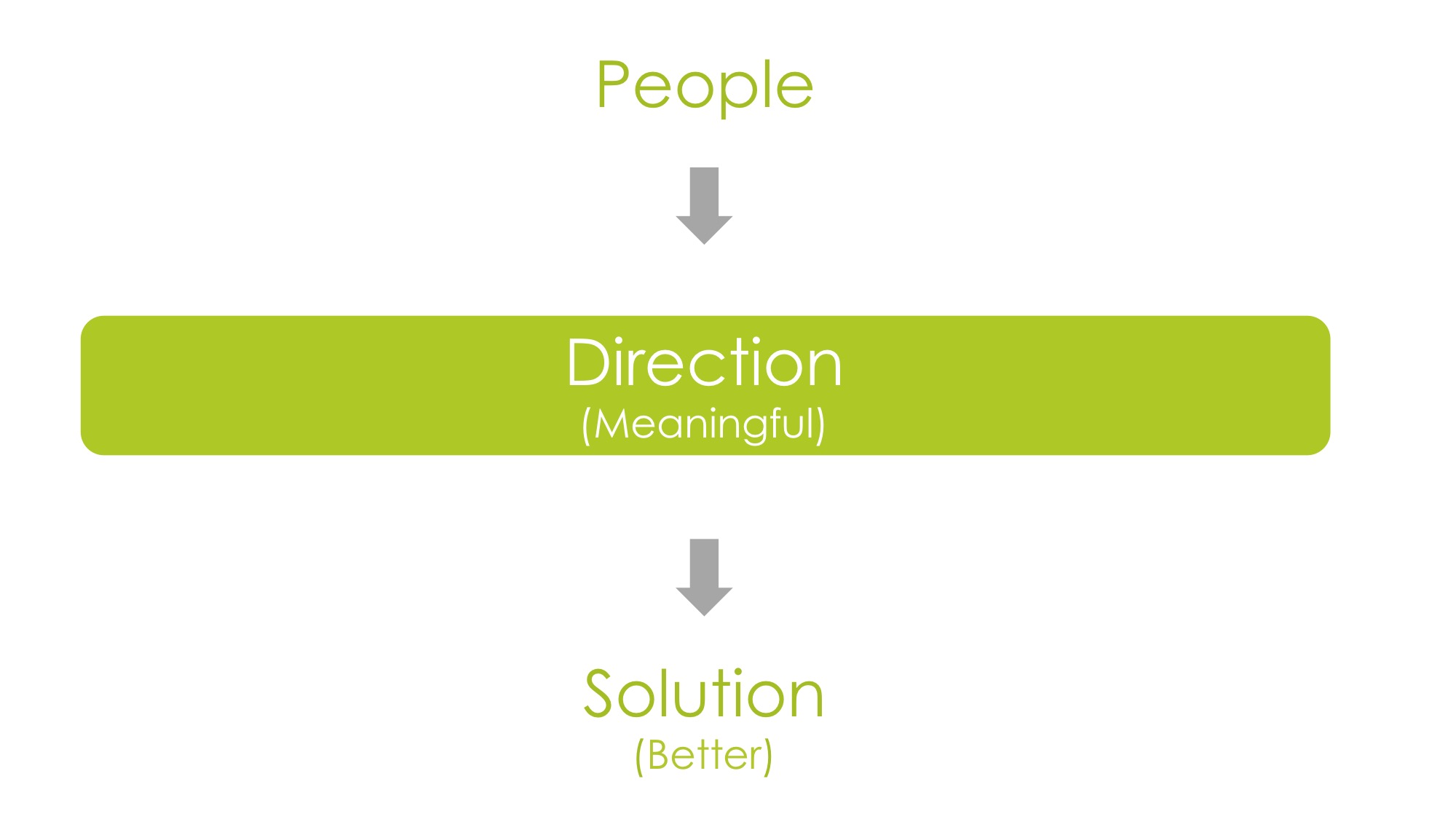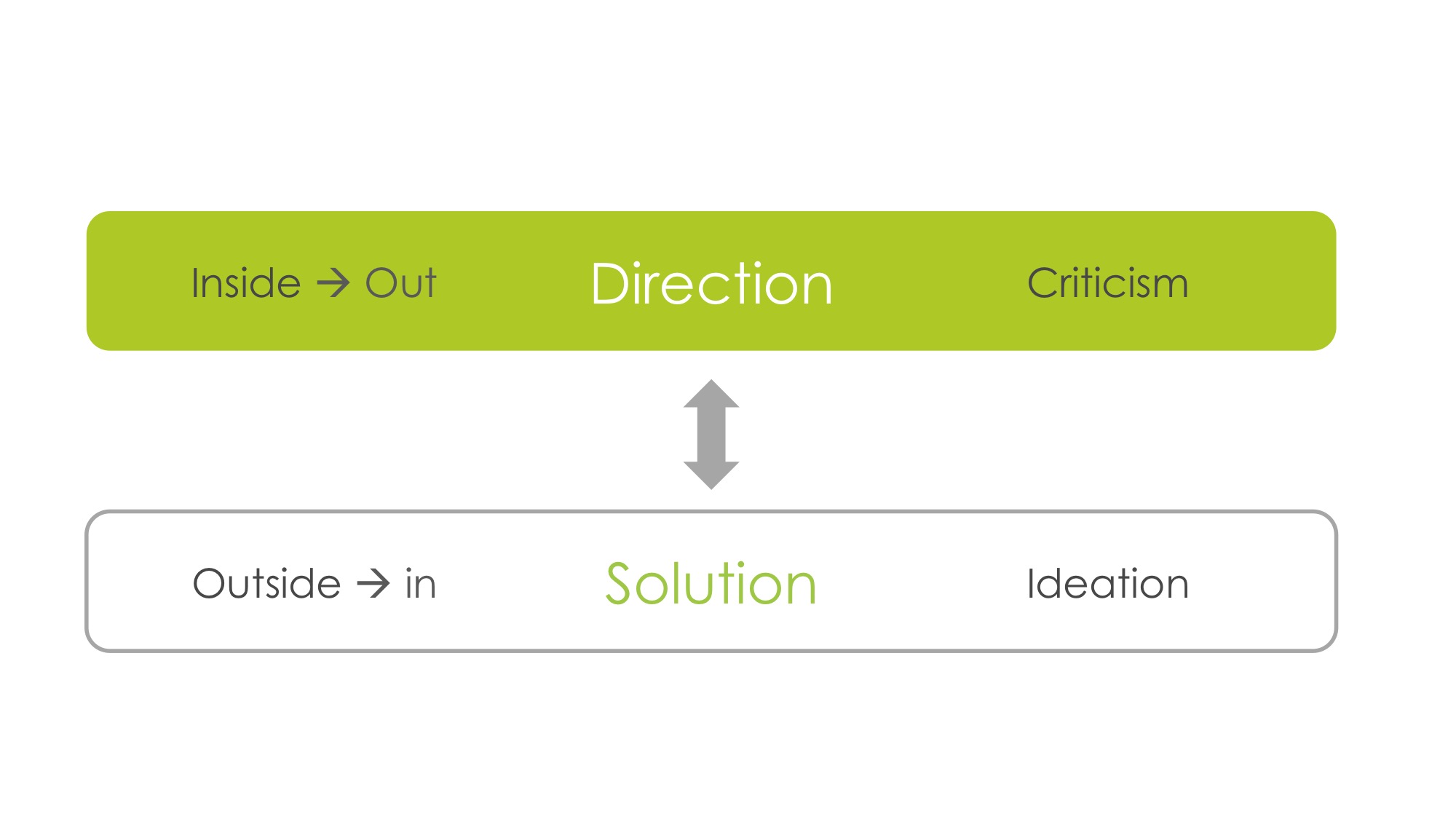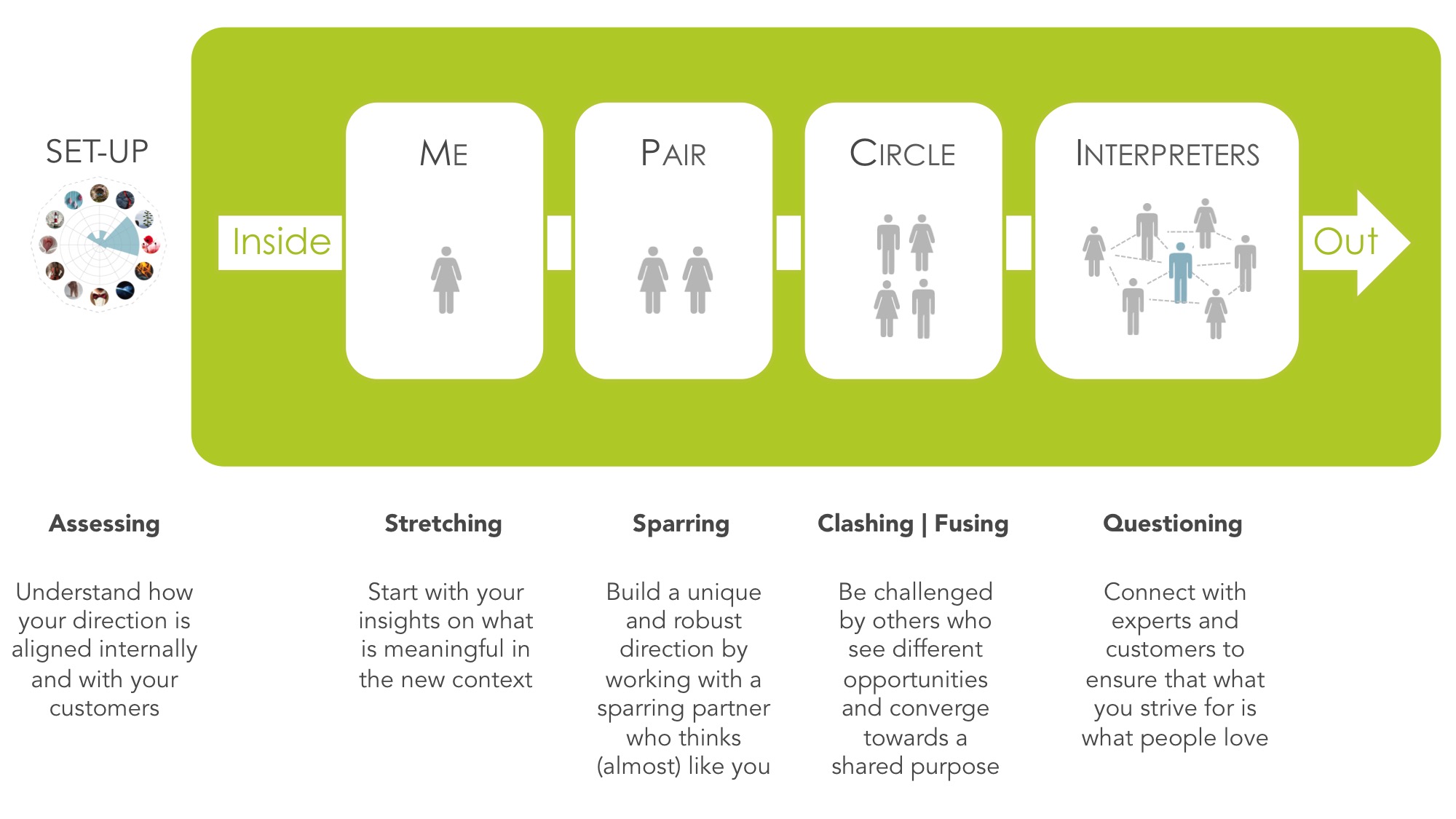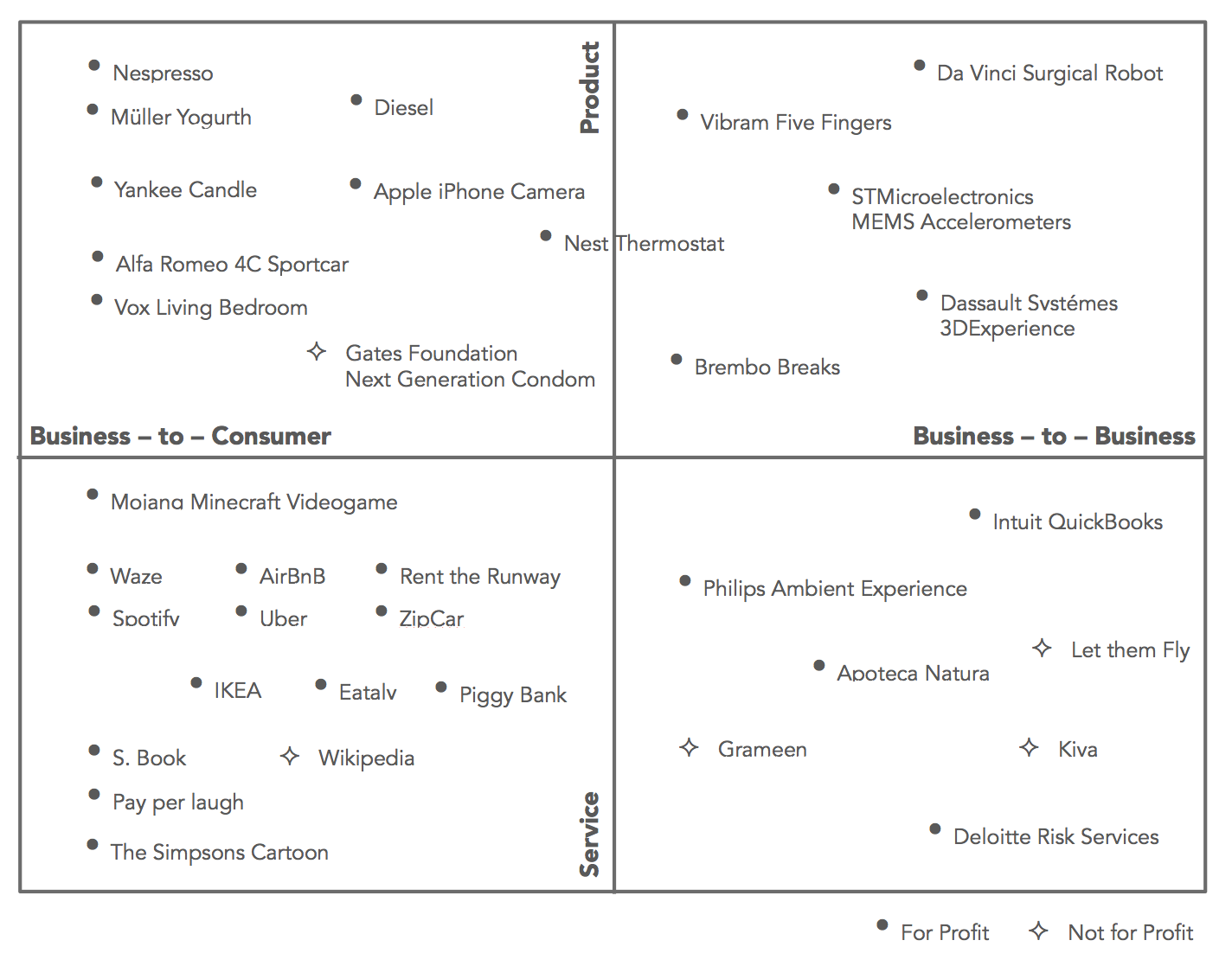Overcrowded | Content.
In a overcrowded world, value comes from a meaningful direction.
“We are meaning-seeking creatures”, Irvin Yalom, Psychiatrist
Whether we are talking of products, services, organizations, or business models, there are always two levels of innovation.
Innovation of solutions: better ideas to solve established problems. It’s a new how, a new way to address the challenges that are considered to be relevant. A novel solution may provide incremental or even radical improvements, but always in the same direction: they are “more of the same” innovations.
Innovation of directions. a novel purpose that redefines the problems worth addressing. It takes innovation one level higher—not only a new how, but especially a new why. A new value proposition. A new interpretation of what is meaningful.
In a world overcrowded by ideas, real value comes from this higher level of innovation: a new meaningful direction. Why?
First, because value comes from assets that are in short supply. And nowadays ideas are not in short supply. They are widely available. What is in short supply, and therefore makes a difference, is the capability of seeing a meaningful direction in this sea of ideas.
Second, because when options are abundant, without a shared purpose we fall into the paradox of ideas: the more ideas we create, the more we move in different directions, the less innovation happen.
Third, because in a changing world, what is meaningful changes as well. If you focus on solutions, you will inevitably end up solving problems that meanwhile have become meaningless.
Hence, moving innovation one level higher, to what is meaningful, is nowadays necessary to make a difference. Before you design a new solution, you first have to design the new direction of your innovation journey.
How to nurture a meaningful direction?
“People will never love a product that you do not love; they smell it”. Steve Wozniack, founder of Apple
First, we need start from ourselves, not from outsiders
The design of solutions moves from the outside-in. For example, user-centered innovation advise to start by going out and observing how users use existing products; open innovation advises to engage outsiders to propose novel ideas; and even when it comes to our own contribution, we are advised to “think outside of the box.”
The design of a meaningful direction instead works the other way around: from the outside-in. We need to start from ourselves, from what we find meaningful. Rather than jumping outside of the box, we change the box from the inside.
Why? Because no one can go in a direction that is not meaningful for herself. Solutions can be borrowed from the outside, since they enable us to achieve a target, but the target, the direction, has to come from ourselves.
Second, we need criticism, not ideation
Creative problem solving is built on the art of ideation. Innovation of directions instead requires the art of criticism. Why?
Because when we propose a new direction, we start from us, from our inkling of a hypothesis. Our initial proposal is blurred, vague. Just a sense of direction, whose value and implications are unclear. Not only to others; even more to ourselves. Criticism enables us to dig deeper, confront our insights with the insights of others, and find a new, more powerful purpose that lies underneath. It also prevents us to get stuck in old directions and helps us to get rid of a past that might not be meaningful anymore.
In an overcrowded world the value of others is not to provide more ideas, but to provide developmental feedback.
The process
“I met a group of people who challenged me, … It was the best time in my life” Jonathan “Seamus” Blackley , creator of the Xbox
In the last 10 years we have studied and practiced the process for nurturing meaningful directions. First we learned from companies that did it successfully. Then we assembled the best of what we learned into a prototypical process. Finally we tested this process in a variety of contexts, from large corporations such as Unilever and Procter & Gamble to small and medium size companies such as Mutti and Vox. From consumer products such as Alfa Romeo and Gucci to Business to Business industries such as Deloitte and Prysmian. We were lucky, because along the way we met managers who were willing to try new paths, to enjoy the benefit of being pioneers. Over the years the process has changed from the initial blueprint and has become robust, although of course we keep studying, experimenting, improving.
In the book we share our learning. Part 3 describes how you can start any innovation journey by designing a meaningful direction. It provides a simple step-by step guide with:
- the purpose of the tasks,
- the questions to address
- the methods, checklists and tools to answer those questions
Examples of questions addressed:
- How to envision a direction for your innovation project?
- How to find a sparring partner with whom to share developmental criticism?
- How to converge towards a shared purpose in a larger team?
- How to make our direction more meaningful by being challenged by outside interpreters and users?
- How to engage large organizations into action?
Learn more about the process →




